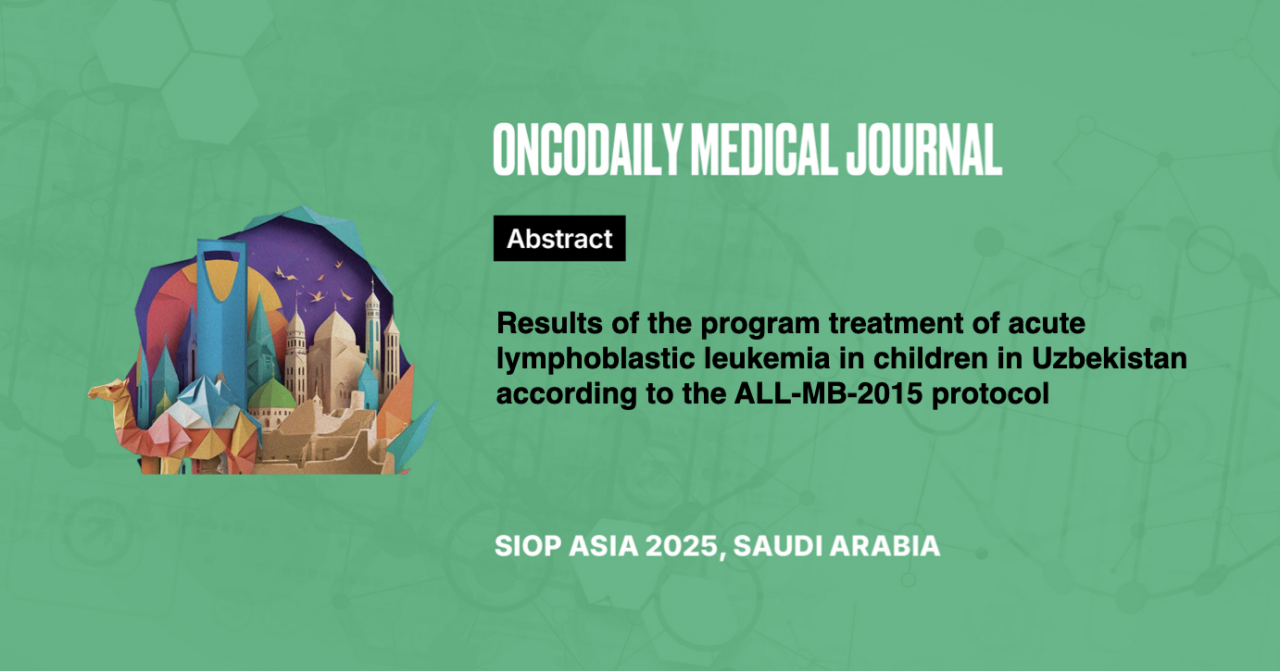Results of the program treatment of acute lymphoblastic leukemia in children in Uzbekistan according to the ALL-MB-2015 protocol
Abstract
Introduction: Since 1991, the Research Institute of Pediatric Hematology (now the Federal Scientific and Clinical Center for Pediatric Hematology, Oncology and Immunology of the Ministry of Health and Social Development of Russia, Moscow) has been using the original Moscow-Berlin protocol for the treatment of children with ALL, created in collaboration with the Charité clinic (Berlin, Germany), the main the characteristics of which are the replacement of prednisolone with dexamethasone, the use of a long regimen of therapy with L-asparaginase and the use of prolonged intrathecal therapy with three drugs (Rumyantsev A.G., 1996; Karachunsky A.I., 1997), the absence of high-dose chemotherapy with methotrexate for groups of standard and intermediate risk .
Since 2015 treatment was started according to the new version of the ALL-MB-2015 protocol, based on the determination of MRD by immunophenotyping, in which there are 12 risk groups.
Methodology: The study included 439 patients who received treatment according to the ALL-MB-2015 protocol at the Center for Pediatric Hematology, Oncology and Clinical Immunology (Uzbekistan, Tashkent). The average age of patients was 9.6±1.3, there were 359 (81.9%) patients under 10 years old, 80 (8.1%) over 10 years old and under 18 years old, median follow-up was 7 years. Boys accounted for 55.1% (241 patients) and girls 44.9% (198 patients). There were 141 (32.1%) patients with enlarged spleen more than 4 cm, 298 (65.9%) – less than 4 cm. Statistical calculations were performed using STATISTICA 6.0 software. Differences between compared parameters were considered statistically significant at p ≤ 0.05.
Results: Of 439 patients treated according to the ALL-MB-2015 protocol, 369 (76% ± 3%) patients in CCR; 43 relapses; 18.5%±3.4%. 172 patients were assigned to SRG, of which 151 were in CCR; 80%±6%, 14 relapses; 17.7%±6.1%. 233 patients are assigned to ImRG (intermediate risk group), 196 of them in CCR; 79%±4%, 22 relapses; 15.8%±4.2%. And only 23 patients – to HRG (high risk group), 15 of them in CCR; 49%±12%, 5 relapses; 30.4%±12.1% with chemotherapy alone without bone marrow transplantation.
IF was determined in 394 patients, 336 of them in CCR; 77%±4%, 39 relapses; 18.5%±3.7%. Cytogenetics was performed in 365 patients, 311 of them in CCR; 76%±4%, 36 relapses; 19.9%±4.2%. MRD by immunophenotyping was performed on the 36th day of induction, then every 1.5 months before each consolidation. Since April 2021, blinotumumab has been started in patients with B-ALL. At the beginning of therapy,27 patients had less than 5% of blasts according to the myelogram, and more than 0.01% according to the MRD. Therapy with blinotumumab was carried out – 2 courses for 28 days. Achieved MRD-negative status, which persists in all patients, median follow-up 1.5 years.
Conclusion: The use of a protocol with low-dose PCT, as well as the inclusion of blinatumomab in therapy, showed high efficiency with a significant reduction in toxicity. The application of this protocol made it possible to treat patients outpatiently. This significantly improved the quality of life of patients, and also led to a decrease in infectious complications.





